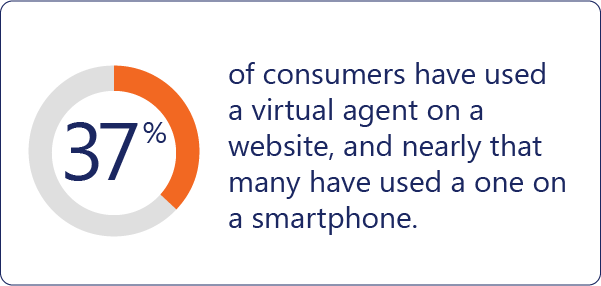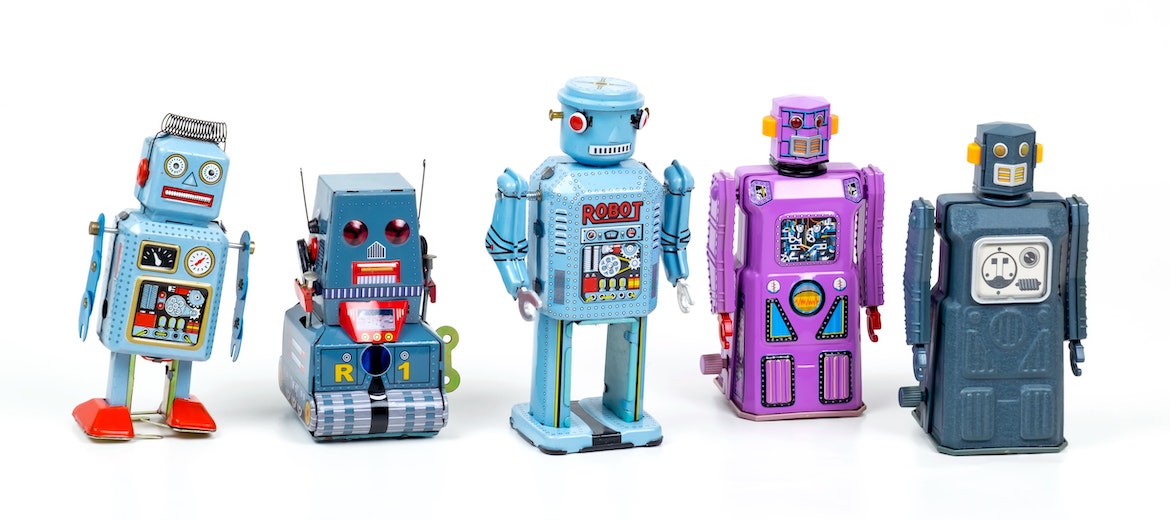3-minute read
Ever since engineers at MIT unveiled the first “chatbot”—Eliza, back in 1966, for you trivia buffs—conversational AI has had a place in the landscape of communication technology. But it wasn’t until Apple introduced Siri in 2011 that virtual assistants entered the mainstream. Fast-forward to today, and conversing with non-human helpers is part of daily life for millions of people. In fact, in a cheeky 2018 episode of the resurrected X-Files TV series, nearly all dialogue is human-to-machine—the characters converse with smartphone apps, driverless cars, alarm systems, and even robotic vacuum cleaners, but exchange hardly a word with each other until the very end.
With the proliferation of conversational AI has come a new vocabulary to describe its various types of interface, which can be confusing for businesses looking to leverage the cost-saving benefits and productivity boost that virtual helpers make possible. In this article, I’ll clear up some of this confusion by explaining the key differences among the three most popular applications of conversational AI: chatbots, virtual assistants, and virtual agents.
Need help with virtual agents?
Chatbots
MIT’s Eliza and her fellow chatbots utilize a combination of basic automation and natural language processing (NLP) to interpret and respond to text- or voice-based requests from human users. Chatbots use conditional logic (“if this, then that”) and keyword matching to answer basic questions, but lack the ability to understand customer intent and engage in meaningful dialogue. Because they are limited to the responses with which they’re programmed, chatbots are best suited to answering simple questions or executing simple requests—think of an airline passenger checking the ETA of their flight or an e-commerce customer tracking a shipment.
Virtual assistants
Virtual assistants (VAs) leverage AI and the latest in semantic understanding technology to better understand user input, locate the required resource(s), and respond in an accurate, timely manner. While chatbots deliver the answers they’ve been programmed with, VAs can tap into multiple systems to find the resources needed to answer the user’s question or fulfill their request.
VAs have made a huge splash in the consumer and social spaces as people rely on them to perform tedious tasks quickly and efficiently. In the United States alone, there are over 110 million virtual assistant users, and Google Assistant now has 500 million users worldwide. Virtual assistants are also gaining popularity in the business world, with applications ranging from benefits management to IT support ticketing to, as we’ll see in a second, customer service.
Virtual assistants leverage AI and the latest in semantic understanding technology to better understand user input, locate the required resource(s), and respond in an accurate, timely manner.
Virtual agents
Virtual agents are a type of virtual assistant that is specially designed to handle customer service interactions—and they’re changing the way businesses support their current and prospective customers. Virtual agents offer immediate help with some of the most common customer service issues (think resetting a password, checking on an order, or asking about warranty coverage) on a 24/7 basis, without the need for around-the-clock staffing.
As virtual agents become smarter and more capable, adoption among customers is accelerating. Thirty-seven percent of consumers report using an online virtual agent from a website, and nearly that many have used a virtual agent or chatbot on a smartphone. In December 2019, Bank of America announced that its virtual agent, “Erica,” had surpassed 10 million users and was on track to complete 100 million client requests.

Virtual agents offer customers the advantages of around-the-clock availability and faster problem resolution, while human agents can focus their time and effort on building relationships and resolving more complex issues. On an organizational level, virtual agents offer businesses the opportunity to improve productivity, to increase overall customer satisfaction, and to extract valuable data about their customers.
As AI, machine learning, and semantic understanding continue to advance, more businesses are coming on board to leverage the advantages of chatbots, virtual assistants, and virtual agents. These solutions have come a long way from their comparatively humble origins, evolving from simple tools to multitalented assets that help businesses increase productivity, improve customer experiences, and benefit the bottom line.

Claim your competitive edge
We create powerful custom tools, optimize packaged software, and provide trusted guidance to enable your teams and deliver business value that lasts.

Alexis Greenwood is a manager in the Logic20/20 Digital Transformation practice, focused on offerings development and innovations. In her experience as a business systems analyst, she enabled change through development of low-code platforms, including Salesforce and ServiceNow, custom applications, virtual assistants, and a variety of tools including ERPs, ITSM tools and CRMs.

